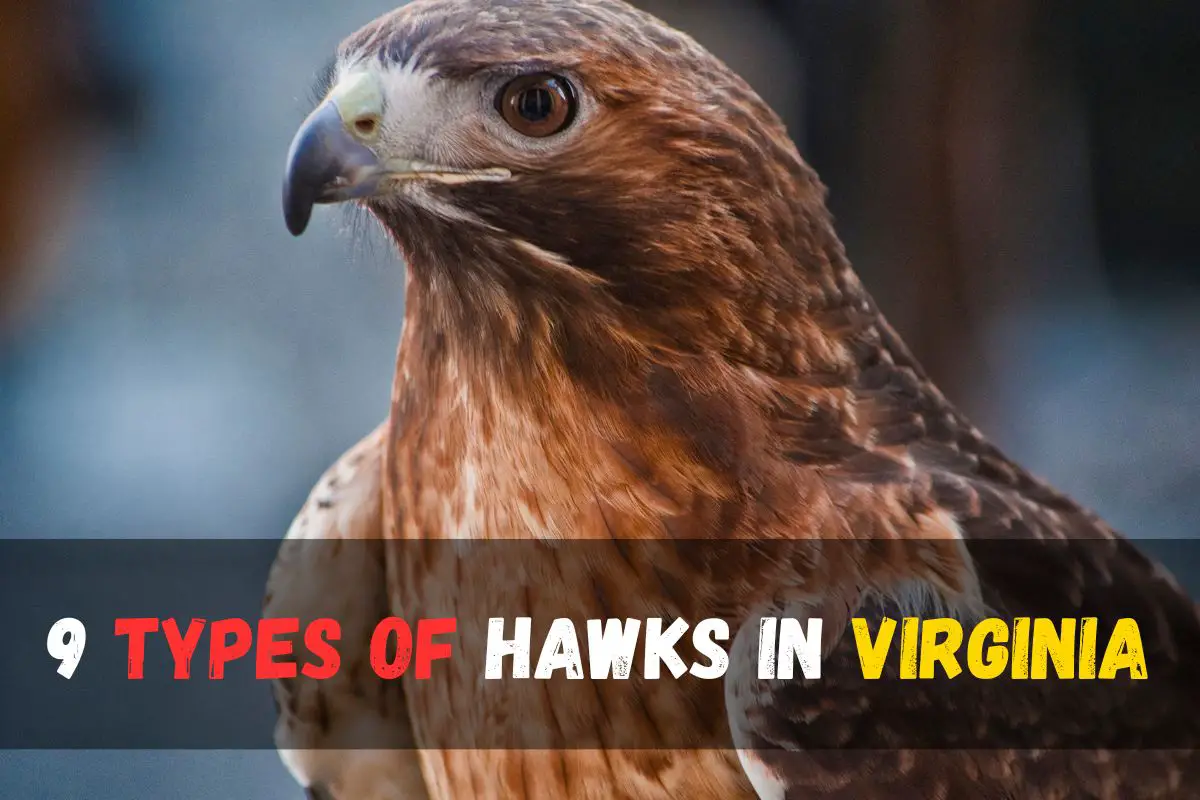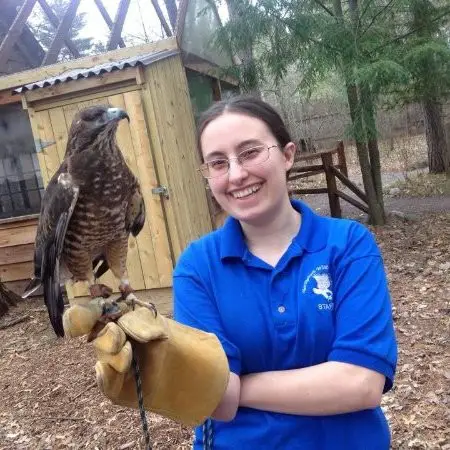Virginia, a state steeped in natural beauty, is a haven for a variety of hawks, those majestic birds that grace our skies with their presence. These remarkable raptors contribute to the vibrant tapestry of Virginia’s wildlife, each species bringing its unique flair to the ecosystem.
One of the most iconic hawk species found in Virginia is the Red-tailed Hawk (Buteo jamaicensis). With its distinctive brick-red tail, this bird is a common sight across the state, from open fields to wooded areas. These skilled hunters are known for their keen eyesight and powerful talons, making them formidable predators as they swoop down to catch their prey.
Another prominent hawk species in Virginia is the Cooper’s Hawk (Accipiter cooperii). Recognized for its sleek build and striking plumage, the Cooper’s Hawk is often found in wooded areas and suburban neighborhoods. These birds are agile hunters, adept at navigating through dense vegetation in pursuit of smaller birds and mammals.
8 Types of Owls in Virginia
In the western parts of Virginia, the Broad-winged Hawk (Buteo platypterus) is a notable migratory species. Every fall, these hawks embark on an impressive journey to their wintering grounds in Central and South America, creating awe-inspiring spectacles known as “kettles” as they gather in large groups during migration.
Hawks are not only fascinating to observe but also play a crucial role in controlling populations of rodents and other small mammals. As top predators, they help maintain a balance in the ecosystem by controlling the numbers of their prey species.
10 Species of Hawks in Virginia
Sharp-shinned Hawk
Sharp-shinned hawks, scientifically recognized as the smallest hawks in Virginia, showcase unique characteristics and behaviors. Understanding their identification, habitat, diet, and population is essential for bird enthusiasts and nature observers.

Identification
Sharp-shinned hawks are characterized by their compact size, with lengths ranging from 9.4 to 13.4 inches, and a weight variation of 3.1 to 7.7 ounces. Their wingspan falls between 16.9 and 22.1 inches. Male Sharpies, particularly, hold the title of being the smallest hawks in the United States and Canada. These raptors exhibit a fast and maneuverable flight pattern, making them adept hunters in wooded areas.
Where to Look for Them
Non-breeding populations of Sharp-shinned hawks are prevalent in Virginia, particularly during winter. While they are widespread throughout the state, a small southwestern portion becomes their year-round residence. The best time to spot these hawks is during fall migration when they travel southwards in considerable numbers. Look for them in thick forests where they prefer to nest, occasionally venturing into open land to hunt for prey.
Appearance
Sharp-shinned hawks possess distinct features. They have long wings and tails, contributing to their exceptional maneuverability. Despite their small size, their flight profile is notable, appearing as a flap-flap-glide pattern. Immature birds are identified by their brown coloring and yellow eyes. The silhouette of a Sharp-shinned Hawk in flight resembles a capital “T,” with the head just peeking out ahead of the wings.
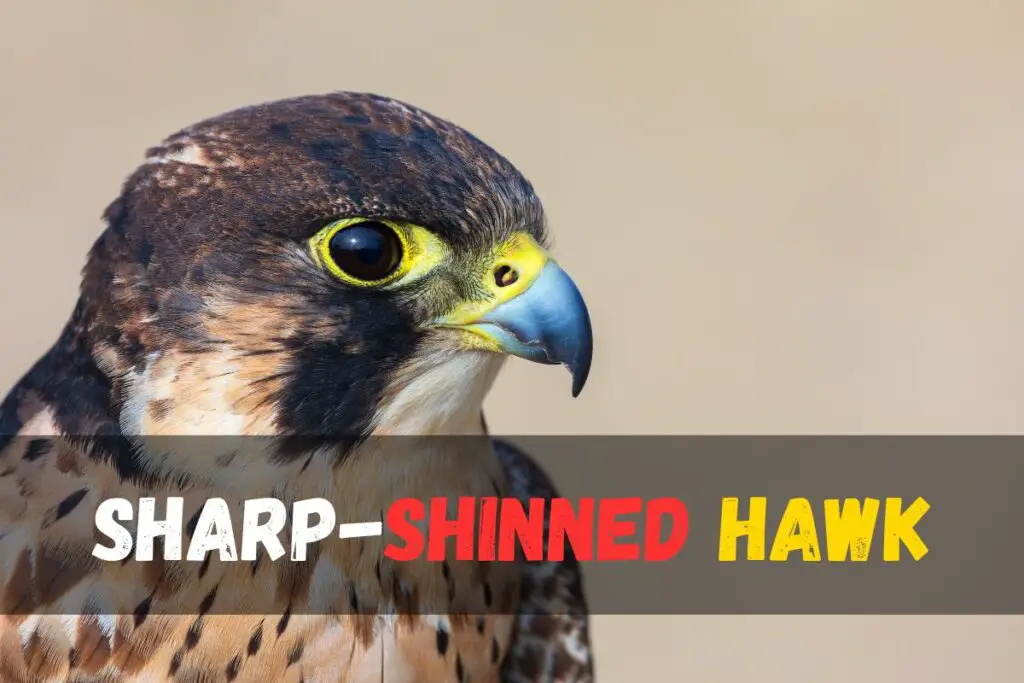
Habitat
These hawks prefer nesting in firs or other conifers, showcasing a particular affinity for thick forested areas. They are well adapted to zipping around trees and shrubs, utilizing their speed to chase prey or pouncing from the canopy to capture them on the ground.
Diet
Sharp-shinned hawks are avid hunters, particularly targeting Robin-sized or smaller songbirds and small rodents. They are known for their stealthy approach, using their speed to chase prey or making strategic pounces. Interestingly, they are frequent visitors to bird feeders, where they prey on small songbirds. If they become regulars, temporarily removing bird feeders can redirect their attention elsewhere.
Population
In Virginia, Sharp-shinned hawks coexist with Cooper’s hawks, sharing a similar diet of smaller birds, insects, and small mammals. Their population dynamics are influenced by migration patterns, with a notable increase in sightings during the fall. However, their presence around bird feeders can be managed by adjusting feeding habits, allowing for a harmonious coexistence with local songbirds.
Cooper’s Hawk
Identification:
Cooper’s Hawks, often confused with Sharp-shinned Hawks due to their similar appearance, can be identified by their larger size, broader wings, and a distinct flying style characterized by a flap-flap-glide motion. They are about the size of a crow, with an accipiter shape, and feature a blocky head and a cap-like appearance.
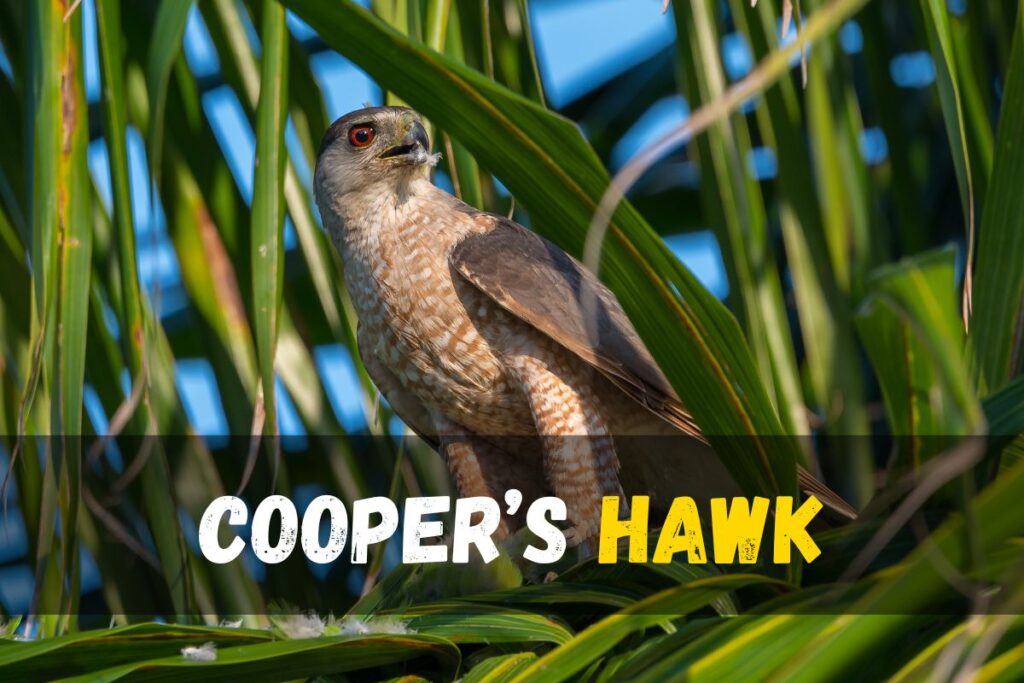
Where to Look for Them:
These hawks can be spotted year-round in Virginia, primarily at the edges of forests. However, their adaptability has led them to increasingly frequent urban areas, suburbs, and towns, especially during the winter, preying on pigeons and doves.
Appearance:
The Cooper’s Hawk exhibits a blue-gray back, red-orange breast, and a barred tail. Notably, their larger head extends beyond the wings, and they have a rounded tail, forming a sideways “C” in flight.
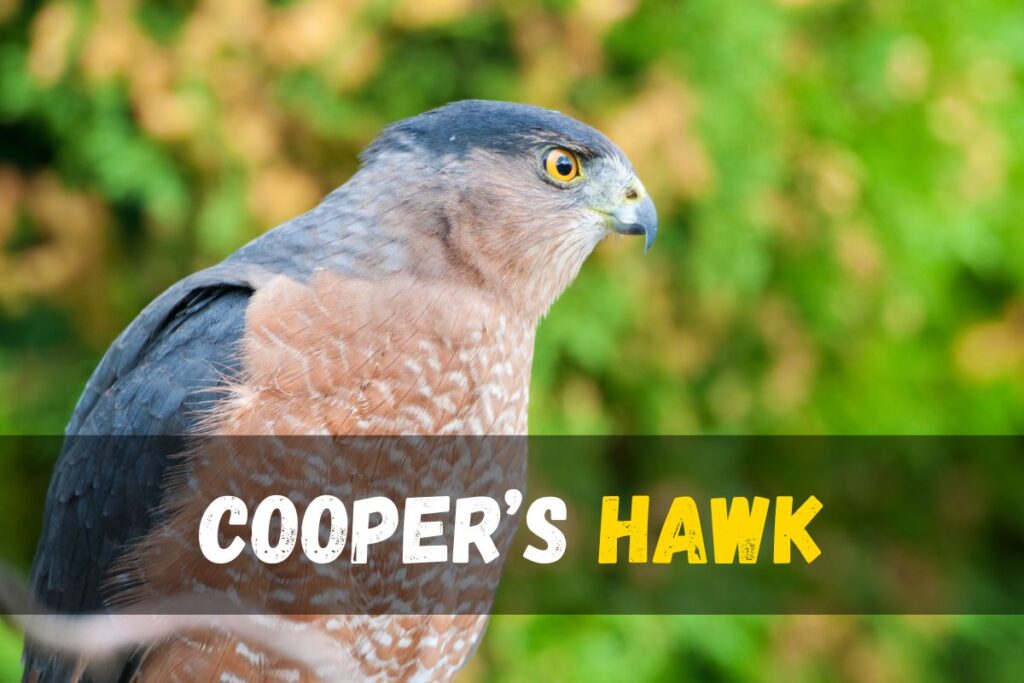
Habitat:
While traditionally found at the edges of woods, Cooper’s Hawks have expanded their habitat to include backyards and urban environments. They nest in old, abandoned nests or clumps of mistletoe, laying 2-6 light blue eggs during the breeding season.
Diet:
Cooper’s Hawks primarily feed on medium-sized birds, especially pigeons and doves. They use sharp talons to catch and kill their prey, and interestingly, they have been observed drowning their prey to expedite consumption.
Population:
Commonly sighted in Virginia, Cooper’s Hawks are non-migratory, with year-round populations. They can adapt to different regions, moving further north during the summer and south during the winter. Their population has been on the rise in populated areas, making them more accessible for observation.
Northern Goshawk
Introduction:
The Northern Goshawk (Accipiter gentilis) stands as one of Virginia’s more uncommon hawk species, known for its elusive nature and impressive features. Understanding the identification, habitat, appearance, and behavior of these birds provides a captivating insight into their presence in the region.

Identification:
Identifying a Northern Goshawk involves recognizing its size, coloration, and distinctive features. With an average length of 23 inches and a wingspan of approximately 43 inches, these hawks are characterized by dark upperparts, white and gray-streaked underparts, and short, broad wings. Notably, they exhibit white stripes across their faces, and their striking red eyes make them easily distinguishable.
Where to Look for Them:
Northern Goshawks prefer coniferous and mixed old-growth forests, making these habitats their primary residences in Virginia. Their elusive nature and rarity make them a challenge to spot, especially during winter, when they become occasional visitors.
Appearance:
These large accipiters present a flight profile similar to buteos, but their long, thin rounded tails distinguish them as accipiters. Their backs are slate gray, and their underparts are white with fine gray barring. Juvenile birds have brownish hues with streaked bellies. Some populations, especially further north, can exhibit almost entirely white plumage.
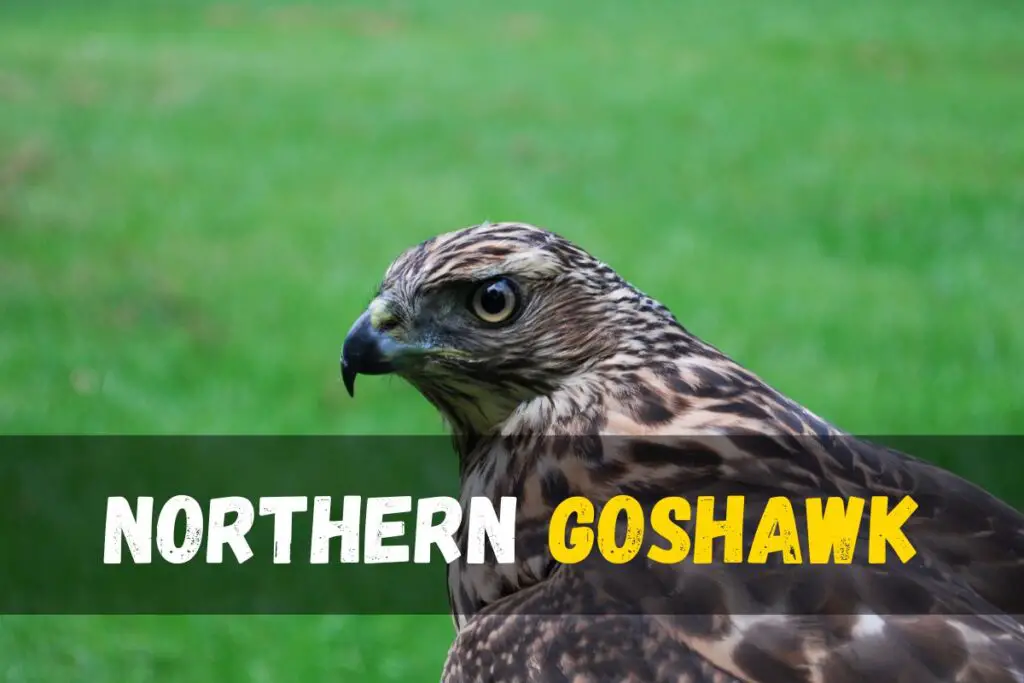
Habitat:
Northern Goshawks inhabit coniferous and mixed old-growth forests in Virginia. Their preference for inaccessible areas contributes to their elusive reputation. Interestingly, they engage in a unique nesting behavior, constructing multiple potential nests before selecting the one deemed suitable for raising their brood.
Diet:
These powerful hawks are skilled hunters, preying on rabbits, snowshoe hares, tree and ground squirrels, and various birds. Their menu also includes reptiles, small mammals, insects, and occasionally carrion. The name “Goose Hawk” in Old English reflects their main food source.
Population:
Northern Goshawks are considered a rare sight in Virginia due to their preference for northern territories. They establish their homes in coniferous or mixed forests, where they find an abundance of their preferred food sources. Their nesting behavior, involving the construction of multiple nests, adds a fascinating layer to their population dynamics.
Red-shouldered Hawk
Introduction:
Red-shouldered hawks are captivating raptors found in Virginia, sharing the skies with other notable species like the red-tailed hawk, sharp-shinned hawk, and Cooper’s hawk. Let’s delve into the characteristics that distinguish the Red-shouldered hawks in the Virginia region.
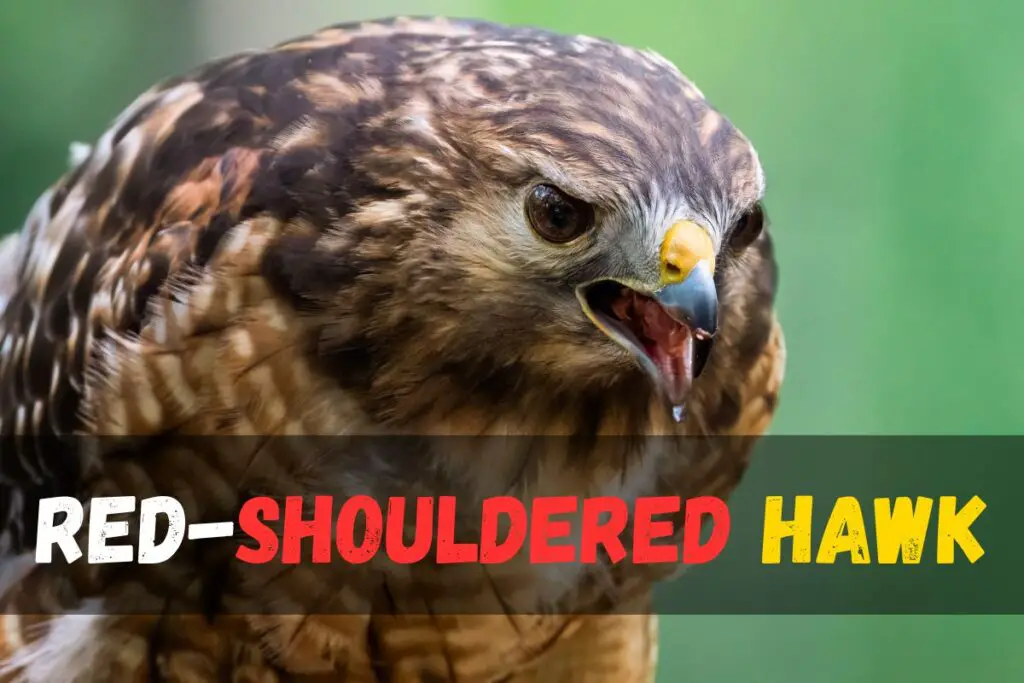
Identification:
Identifying the Red-shouldered Hawk involves noting its light, reddish barring on the pale undersides, white banding on the tails, and distinctive translucent crescents near the wingtips during flight. This, coupled with their size and unique markings, makes them easily distinguishable, especially from other hawk species.
Where to Look for Them:
To catch a glimpse of the Red-shouldered Hawk, explore areas with tall trees and water, such as riverine parks. Their preference for nesting in the tall trees surrounding water sources, like lakes, rivers, creeks, and swamps, makes these locations prime spots for observation.
Appearance:
These medium-sized hawks exhibit rufous-peach barred underparts, a mottled black-and-white back, and striking rufous “shoulders.” The juveniles may lack the reddish coloration of their parents but still showcase distinctive translucent When flying, they display white crescents on the tips of their wings.
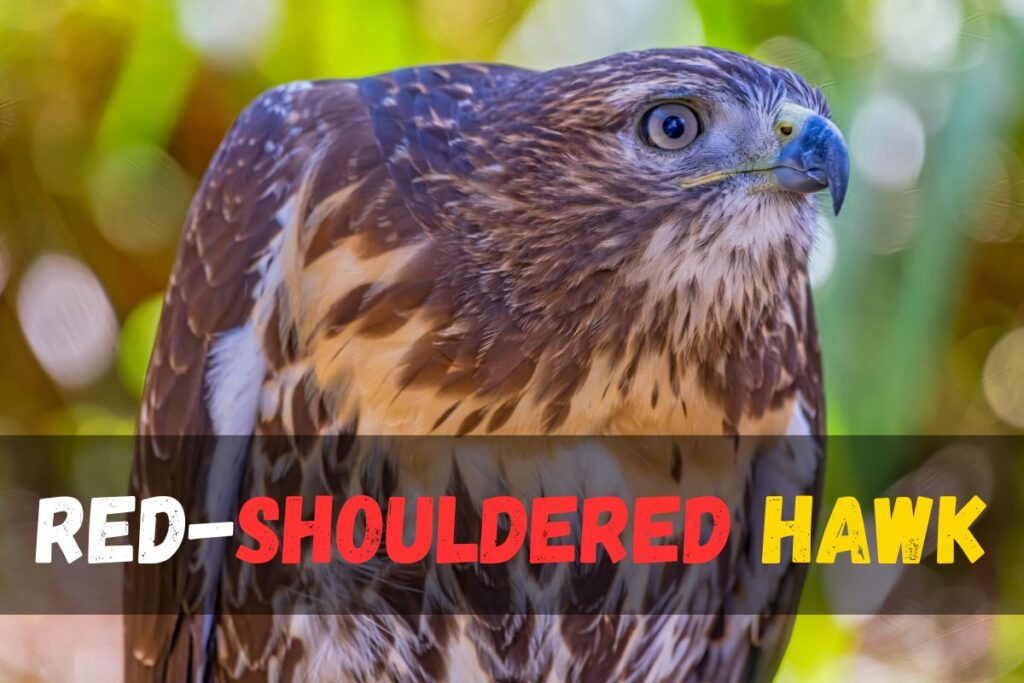
Habitat:
Red-shouldered Hawks thrive in wet forests along streams and creeks, particularly in the swampy southeastern United States. They are known to reuse nests situated in the crooks of trees, refurbishing them with twigs, grass, leaves, and conifer sprigs. Their affinity for mixed forests near water sources defines their preferred habitat.
Diet:
Their diverse diet includes snakes, rabbits, mice, frogs, toads, lizards, crayfish, voles, and occasionally, small birds. These hawks are adept hunters, perching on trees near water to spot prey, showcasing their sharp claws during successful hunts.
Population:
Red-shouldered Hawks are resident birds in Virginia, with a significant population concentrated in the eastern states. They coexist with other bird species but engage in territorial disputes, especially with crows. The population dynamics are stable, and their adaptability to varied environments contributes to their prevalence.
Red-tailed Hawk
Identification
The Red-tailed Hawk, a prominent bird in Virginia, is identified by its distinctive features. Adults have a broad, brown back and a unique red tail. However, identifying juvenile hawks can be challenging as their tails are brown. Look for a dark “belly band” and dark wingtips to differentiate. They are part of the Buteo subdivision and are the largest of their kind in Virginia.
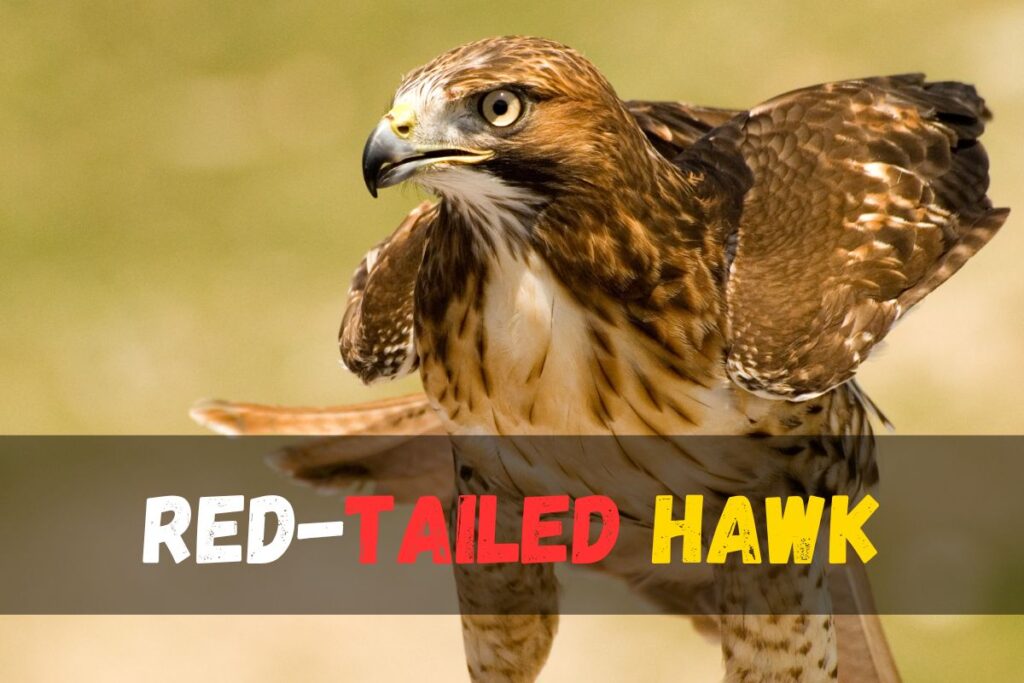
Where to Look for Them
Red-tailed Hawks are a common sight in Virginia, especially along interstate highways and perched on fence posts. They are often observed circling on thermals, searching for small mammals, snakes, and game birds. Their nests, constructed high in trees, provide a commanding view of their territory.
Appearance
These hawks are large, with a wingspan ranging from 44.9 to 52.4 inches and a weight between 24.3 and 51.5 ounces. Adult Red-tailed Hawks have a brown back, pale undersides, and a prominent red tail. Juveniles lack the red tail, making identification trickier.
Habitat
Red-tailed Hawks are adaptable, nesting in tall trees, cliff ledges, and even suburban areas. Their nests, up to 6 feet tall, are constructed from dry sticks. These birds are territorial and defend their nests vigorously, often dive-bombing intruders.
Diet
Feeding on a variety of prey, Red-tailed Hawks target rodents, reptiles, rabbits, and even game birds. They are known for their aggressive hunting behavior, sometimes hunting in pairs and utilizing their large talons for a successful catch.

Population
Red-tailed Hawks can be found year-round in Virginia. They are not only the most common hawks in the state but also across North America. With populations concentrated in the United States and Canada, these hawks exhibit diverse subspecies, varying in size and color.
Rough-legged Hawk
Identification
The Rough-legged Hawk, a distinctive species, stands out among Virginia’s hawk population. Recognizable by its feathered legs, it is one of the few birds of prey, alongside the ferruginous hawk and golden eagle, to exhibit this unique feature. This characteristic, along with its size, dark and light morphs, and specific field marks, aids in easy identification.

Where to Look for Them
During the winter, Virginia becomes a temporary home for the Rough-legged Hawk. Keep an eye on open fields, marshes, and even telephone poles. Notably, Northern Virginia and areas around the eastern shore, particularly Kiptopeke State Park, are frequent sighting spots.
Appearance
Sized between a crow and a goose, Rough-legged Hawks boast a wingspan of 52-54.3 inches and are around 19 inches long. Their plumage varies, with dark and light morphs displaying unique patterns. The most distinguishing features include dark wrists, a black belly band, and, of course, the rough-looking feathered legs.
Habitat
While they nest in the Arctic tundra, these hawks migrate south to escape the harsh winters. In Virginia, they prefer open spaces like agricultural fields. The Arctic origin becomes evident in their preference for colder climates.
Diet
Rough-legged Hawks exhibit a diverse diet, primarily feasting on lemmings in their Arctic habitat. In Virginia, their menu includes voles, mice, ground squirrels, and other small mammals. In harsh winters, carrion becomes a significant part of their diet.
Population
Though not abundant in Virginia, Rough-legged Hawks are observed in less than 1% of sightings. Their winter presence, especially from November to March, aligns with their southern migration.
Broad-winged Hawk
Identification
The Broad-winged Hawk, scientifically known as Buteo platypterus, is a distinctive bird of prey that can be identified by its compact size, stout rectangular build, short wings, and blunt tails. During the breeding season in Virginia, they exhibit reddish-brown heads, barred breasts, and banded tails, making them easily recognizable. Notably, they come in two color variations: dark morph, uniformly dark brown with a white-banded tail, and light morph, with brown heads and chests, barred underparts, and dark tails featuring a broad white band.

Where to Look for Them
Broad-winged hawks are predominantly found in Virginia, especially during their breeding season from April to August. The western part of the state sees more breeding activity. Hawk watchers have the best chance of spotting them during fall migration when large flocks, referred to as “kettles,” travel to South America. They prefer highly forested areas, often near water sources, and are known to reuse nests located at the edges of forests.
Appearance
Measuring around 15 inches in length with a wingspan of 34 inches, the Broad-winged Hawk is smaller than some other Buteos. Their stocky bodies, large reddish heads, and distinctive white banding on short tails are key features for identification. The dark and light morphs provide additional visual cues, with the former having a uniformly dark appearance and the latter featuring brown heads and chests.
Habitat
These hawks exhibit a preference for highly forested areas over grasslands, and they are commonly observed near the edges of forests. During the breeding season, they reuse nests, a behavior contributing to their identification. These nests, constructed from sticks and bark and lined with feathers, moss, lichens, and pine needles, are strategically placed lower in the canopy than those of other raptors.
Diet
Broad-winged hawks are opportunistic hunters, preying on mammals, amphibians, and insects. From their perches on trees or poles, they hunt small mammals, frogs, snakes, and even young turtles. Their foraging behavior is notable during the breeding season when they actively search for food from elevated positions.
Population
Despite their remarkable characteristics, there are concerns about the population of Broad-winged hawks. Studies suggest a decline in their numbers due to habitat loss, emphasizing the need for conservation efforts to protect their forested habitats. The distinct whistles they emit while hunting, especially during hawk watches, can aid enthusiasts in locating these magnificent birds.
Osprey
Identification:
The Osprey, scientifically known as Pandion haliaetus, is a distinctive hawk species found in Virginia. It is recognized by various names such as Fish Hawk, Sea Hawk, and River Hawk.

Where to Look for Them:
Ospreys are seasonal visitors, commonly spotted along the Atlantic Coast and the Chesapeake Bay estuary in Virginia. They frequently nest on tall structures like telephone poles, chimneys, and specially-built Osprey platforms.
Appearance:
These hawks exhibit a unique appearance with a white head featuring a bold brown stripe, a large brown body, and a dark tail. Notably, they are smaller than the iconic Bald Eagle, possessing dark, banded tails and a different flight profile.

Habitat:
Ospreys prefer nesting in elevated locations such as telephone poles, chimneys, and specially designed platforms. They are adaptable, constructing nests with twigs, sticks, and grass, and even incorporating colorful items like plastic bags or old clothes.
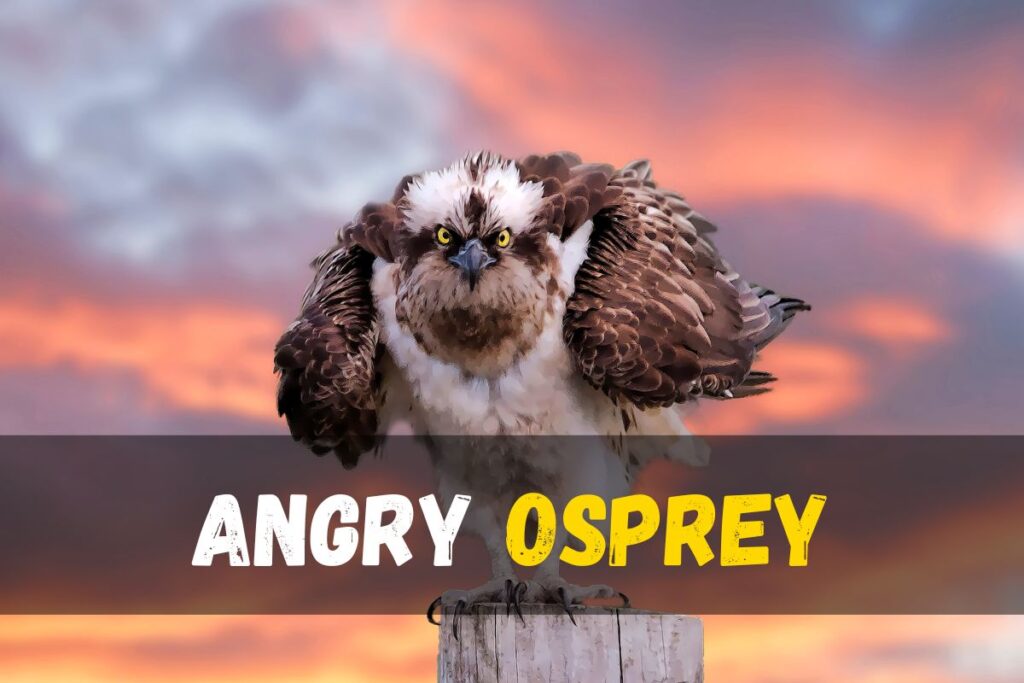
Diet:
Ospreys are excellent anglers with a diet exclusively comprising fish. They display remarkable hunting skills by scanning open waters, hovering over prey, and diving feet-first to grasp their catch. Their unique toes, equipped with barbs, facilitate a secure grip on slippery fish.
Population:
While Osprey populations in Virginia may seem abundant during summer, historical challenges such as the impact of pesticides, especially DDT, led to a decline in the 1960s and 1970s. The banning of DDT has allowed populations to recover, and now Ospreys are thriving on the East Coast.
Northern Harrier
Identification
The Northern Harrier, scientifically known as Circus Hudsonius, is a distinctive hawk species found in Virginia. Recognizing them is relatively straightforward, especially when they are airborne. Look for a V-shaped flight pattern with wings held high over the body. Male and female harriers exhibit notable differences in markings. Adult males, often referred to as “Grey Ghosts,” feature gray upperparts, white underparts, and a white rump patch. In contrast, females are uniformly brown with no white posterior patch.
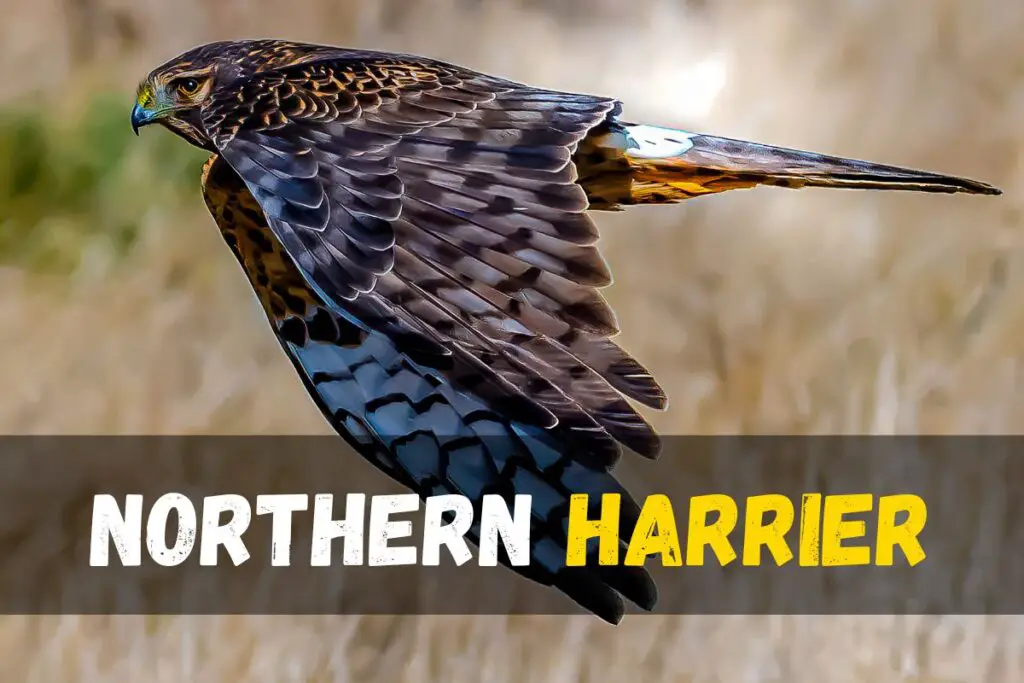
Where to Look for Them
To spot Northern Harriers, focus on open fields, marshes, and grasslands. These hawks prefer low-flying glides over these terrains while searching for prey. Keep an eye on areas where they are known to frequent, especially during the early morning or late afternoon.
Appearance
Northern Harriers are approximately 19 inches long, with a wingspan of 44 inches. Their unmistakable features include a dish-shaped owlish face, a prominent white rump patch visible in flight, and a lengthy tail. The “Grey Ghost” males have light gray heads, dark gray backs, and white breasts, creating a captivating ghostly appearance. Females, on the other hand, exhibit a dark brown coloration with light underparts.
Habitat
These hawks are well-adapted to marshes and wetlands, earning them the former moniker “Marsh Hawks.” They are skilled at navigating low over the ground, employing slow, drifting patterns while hunting for prey. Northern Harriers also build their nests in thick vegetation, providing a secure environment for laying 4-5 white eggs.
Diet
Northern Harriers primarily feed on small mammals and songbirds. Their hunting style involves gliding low over marshes and grasslands, showcasing their exceptional aerial abilities. The population of these hawks contributes to the ecological balance by controlling the populations of their prey.
Population
The Northern Harrier population plays a crucial role in maintaining the health of ecosystems. Their presence helps regulate the populations of small mammals and songbirds, contributing to the overall biodiversity of the region. Conservation efforts aimed at preserving their habitats, particularly marshes and grasslands, are essential for sustaining their population and the ecological balance they bring.
FAQ’S
In Virginia, what is the largest bird of prey?
The largest bird of prey in Virginia is the bald eagle (Haliaeetus leucocephalus). It holds the title of our national bird and is one of the largest raptors in the region, with an impressive wingspan of up to 8 feet. Notably, the female bald eagle is larger than the male and can weigh up to 14 pounds.
What is the strongest type of hawk?
The Ferruginous Hawk, as eloquently described by noted ornithologist Arthur Cleveland Bent, stands out among its avian counterparts as the largest, most powerful, and grandest of the buteos. With its impressive wingspan of 4.7 feet and a size of about two feet, this hawk possesses eagle-like qualities, making it the strongest type of hawk. The regal nature of the Ferruginous Hawk, coupled with its formidable physical attributes, solidifies its reputation as the most robust and powerful hawk in the avian kingdom.
Are there golden eagles in Virginia?
Yes, golden eagles are indeed present in Virginia, and they constitute a significant resource throughout the central Appalachian mountains.
What do hawks eat in Virginia?
Hawks in Virginia have a diverse diet, including mammals such as voles, rats, rabbits, and ground squirrels. They also consume various birds, ranging up to the size of pheasants, and reptiles, with a particular focus on snakes. Additionally, hawks in Virginia may occasionally eat bats, frogs, toads, insects, and other creatures. In some instances, they may feed on carrion.
What is the most common hawk in Virginia?
The most common hawk in Virginia is likely to be the red-tailed hawk, as it is mentioned as the one with which most people are familiar. The red-tailed hawk is commonly seen perched along roads and interstate highways in Virginia, especially during the winter months. Additionally, red-tailed hawks are part of the group known as buteo hawks, which further establishes their presence and prominence in the region.
What kind of small hawk lives in Virginia?
The small hawk that lives in Virginia is the Sharp-shinned Hawk. These hawks are known for their athleticism and acrobatic movements, and it’s common to observe them swiftly zipping through the woods or around bird feeders in a blur of motion.

